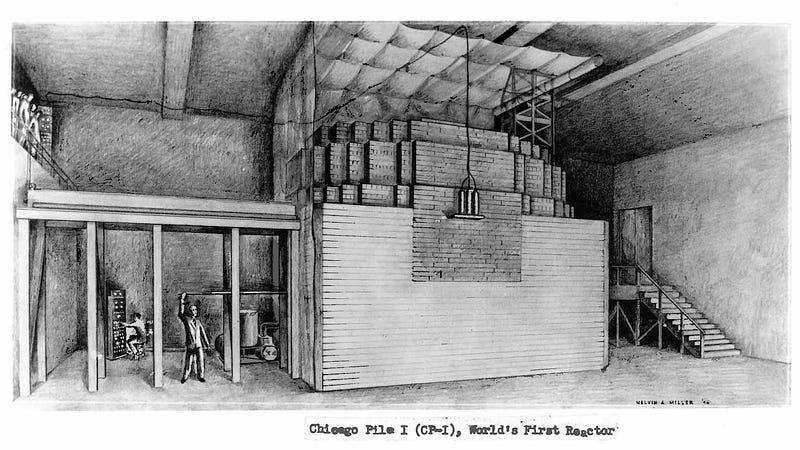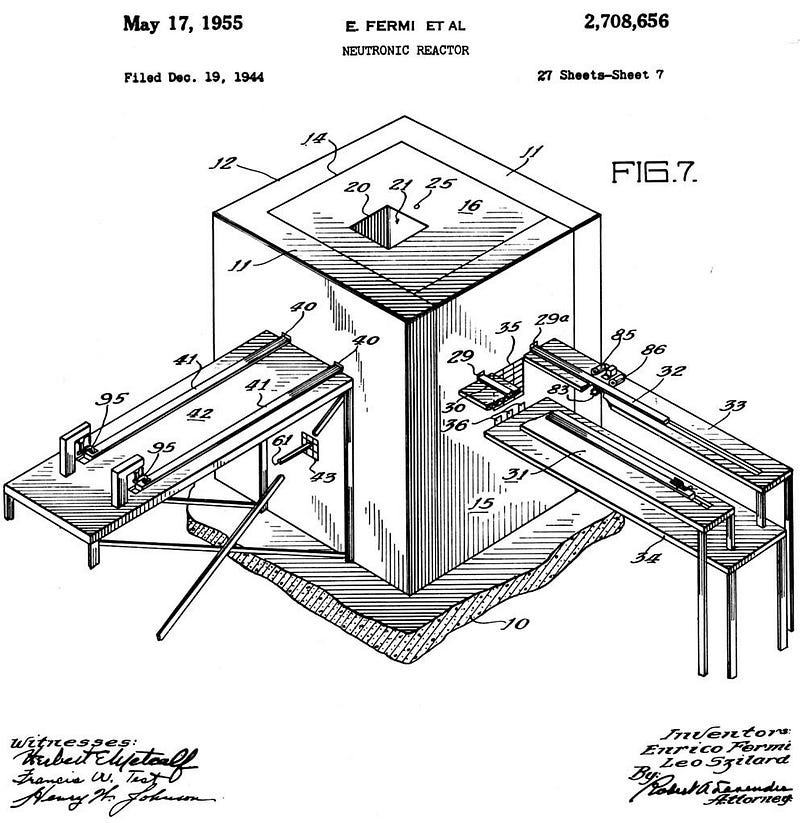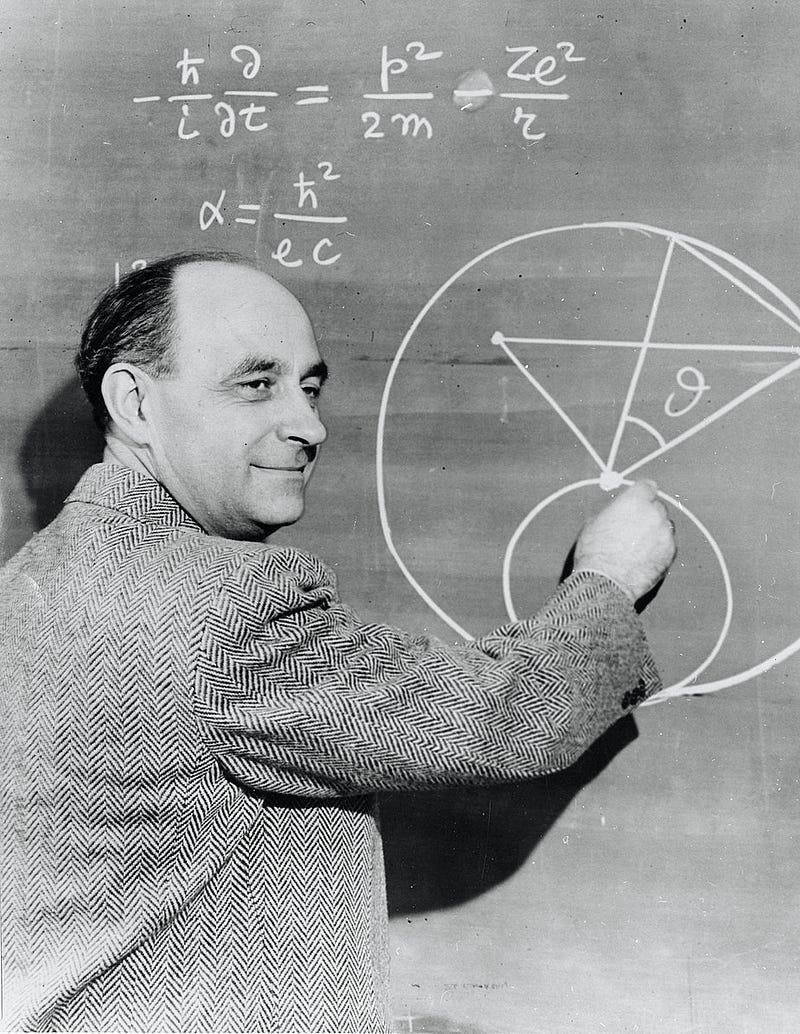The Surprising Location of the First Nuclear Reactor
Written on
Chapter 1: A Touchdown in Science
In the curious and often quirky realm of scientific history, a unique story unfolds that defies expectations. Picture, if you will, the world’s inaugural nuclear reactor quietly operating beneath the stands of a university football stadium. This is not the setting one might envision for a pivotal moment in nuclear science. Yet, reality, as it tends to do, often outstrips fiction. It was the fall of 1942, during a time when the globe was engulfed in World War II, and Chicago's Stagg Field was devoid of cheering crowds and players clashing on the field. Instead, it was home to an extraordinary team of scientists, spearheaded by the genius of Italian physicist Enrico Fermi.
Nestled under the West Stands of the now-demolished stadium, Fermi and his team were on a mission to create the world’s first nuclear reactor, known as Chicago Pile-1 (CP-1). Their objective was to spark the first artificial, self-sustaining nuclear chain reaction—a kind of scientific touchdown, if you will. The story recounts a charmingly improvised endeavor; the materials for this groundbreaking project were simple: graphite blocks, wooden beams, and uranium oxide. This image starkly contrasts with the high-tech facilities one might typically associate with nuclear research. However, the beauty of science often lies in its ability to achieve great things with humble resources.

Artistic depiction of CP-1 (Image courtesy: Argonne National Lab)
Lacking cooling systems or radiation shields, CP-1 was as rudimentary as it could be, primarily because there was uncertainty about whether it would even function. Yet, on December 2, 1942, Fermi and his team accomplished their goal: the reactor achieved criticality. This marked a significant milestone in an unconventional venue, a site designed for athletic events rather than scientific breakthroughs. At its core, CP-1 operated on fundamental principles of nuclear physics: nuclear fission. When a neutron—a neutral subatomic particle—collides with the nucleus of a uranium-235 atom, the nucleus disintegrates, releasing an immense amount of energy and additional neutrons. These liberated neutrons can then strike other uranium-235 nuclei, initiating a self-sustaining chain reaction.
Just as the rudimentary Chicago Pile-1 was built and functioned, it laid the groundwork for future nuclear reactors. It also triggered a series of nuclear projects that would significantly influence the world. Fermi and his colleagues cleverly incorporated graphite blocks as moderators, slowing down the liberated neutrons to increase the likelihood of their capture by other uranium atoms, thus sustaining the reaction. Control rods made from neutron-absorbing material could be inserted or withdrawn to adjust the reaction rate. While the seats above may have been unoccupied, the event had its audience. A select few gathered around the precarious nuclear assembly, eyes wide with anticipation. Fermi, calm and collected, expertly removed the control rod, silencing the cadmium-laden “scram” safety rod, thereby initiating the first artificial self-sustaining nuclear chain reaction.
At that moment, the world—at least that section hidden under the Stagg Field bleachers—stepped into the nuclear age. A coded message proclaimed, "The Italian navigator has landed in the New World," announcing the triumph to James B. Conant, who oversaw the Manhattan Project.


[Left] Patent application drawing of CP-1 by Fermi and Szilard. (Courtesy: Argonne National Laboratory) [Right] Physicist Enrico Fermi writing on a chalkboard (Courtesy: University of Chicago, Source: Wikimedia)
With the successful operation of CP-1, the ambitions of the Manhattan Project expanded from theoretical proof to practical application. The wartime necessities called for the development of larger, more efficient reactors capable of producing plutonium-239, a fissionable material suitable for atomic bombs. This led to the creation of CP-2, essentially a relocated and concrete-encased version of CP-1 for safety, and CP-3, the world’s first heavy-water moderated reactor. These reactors were situated at a more isolated site in the Red Gate Woods, located southwest of Chicago.
Simultaneously, the Manhattan Project initiated reactor developments in other locations, including the famous B Reactor and its counterparts at the Hanford Site in Washington state. These reactors were designed not for experimentation but for the mass production of plutonium. They were larger, more complex, and water-cooled, yet their operational principles were rooted in those demonstrated beneath the Stagg Field bleachers. Ultimately, the efforts at these reactors culminated in the creation of the world's first nuclear weapons, infamously used in Hiroshima and Nagasaki in 1945. However, the enduring legacy of CP-1 extends far beyond its contribution to the Manhattan Project. It established a new energy framework, paving the way for peaceful nuclear applications, including electricity generation and medical treatments.
CP-1 not only represented a scientific milestone but also vividly illustrated what could be termed scientific boldness. It showcased the remarkable achievements possible when brilliant minds unite with a shared objective, regardless of how improbable it may appear. So, the next time you find yourself at a football game, glancing down at the field or up at the lights, take a moment to remember Fermi and his team. Beneath your very feet could lie a site ready for the next significant leap in scientific innovation. As history illustrates, football stadiums and nuclear physics can form an unlikely yet extraordinary partnership.
Chapter 2: The Dawn of Nuclear Power
The first video titled "First nuclear reaction | The Day Tomorrow Began" explores the historic significance of the initial nuclear reaction at CP-1, providing insights into its groundbreaking implications for future scientific endeavors.
The second video, "How Was the First Nuclear Reactor Developed? (Chicago Pile 1)," delves into the development of CP-1, showcasing the innovative techniques and materials that made this monumental project possible.
Enjoyed this piece? Make sure to click that “clap icon ?,” as it encourages me to write more stories like this! You can also become a Medium member by using my referral link. Subscribe to receive my stories directly in your inbox. Peace out!